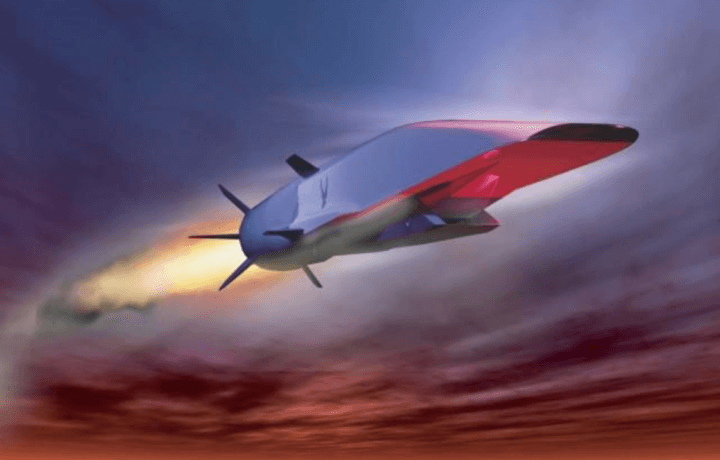This month, the United States Air Force conducted a test of its AGM-183A Air-launched Rapid Response Weapon (ARRW), which was launched from the wing of a B-52 Stratofortress off the Southern California Coast. The exercise was seen as a major step toward the Air Force fielding a hypersonic weapon, which could be a significant game changer for the U.S. military as such a missile could travel several times faster than the speed of sound (well in excess of Mach 5) and be capable of maneuvering with computerized precision.
Milestones Made in Hypersonic Weapons
Because the speed and force of the weapon is so significant, it could inflict damage through sheer “kinetic” impact rather than actually requiring an explosive. However, it could still be fitted with a nuclear warhead and would be virtually unstoppable with current anti-missile technology.
“This is a major milestone for the program, the team and our Air Force,” said Brig. Gen. Heath Collins, Air Force program executive officer for weapons. “ARRW is the first step in bringing game-changing hypersonic capabilities to our Warfighters.”
The Air Force’s ARRW program development began with the Defense Advanced Research Projects Agency’s Tactical Boost Glide demonstration system, which will be integrated into the ARRW payload. To date, it has successfully completed two prior captive-carry tests.
Flying High and Fast With the Army
The U.S. Army is also seeking to develop hypersonic technology and announced that Adranos Inc., a Purdue University-affiliated company has developed a high-performance solid rocket fuel called ALITEC for missile and space launch systems. The company has been awarded more than $1.1 million contracts collectively from the U.S. Army’s Aviation and Missile Center and the OUSD (R&E)’s Rapid Reaction Technology Office.
Part of the contract will be used by Purdue’s Zucrow Laboratories’ heated air system, which is capable of simulating a Mach 4 environment for hypersonic research.
“These tests will determine ALITEC’s functionality within a hypersonic propulsion system referred to as a solid-fuel ramjet,” said Chris Stoker, Adranos’ CEO. “A solid-fuel ramjet is among the simplest of air-breathing rockets that can substantially increase firing range over traditional solid rocket motors.”
Boosted Solution Gets Us Closer to Hypersonic Weapons
The system utilizes an initial-stage, traditional solid rocket booster to reach the necessary velocities, which then enable a second-stage air-breathing system to carry payloads over very long distances.
“Prior research supports that ALITEC’s performance increases can be applied to both traditional solid-rocket motors and air-breathing systems,” added Brandon Terry, Adranos’ chief technology officer. “We expect ALITEC to increase firing range for both solid-rocket boosters and solid-fuel ramjets, maximizing end-to-end system performance.”
Last year the company had successfully tested a prototype rocket powered by its ALITEC rocket fuel, and it was the winner of the Army’s first-ever xTechSearch competition. Adranos has licensed the technology from its patent holder, the Purdue Research Foundation Office of Technology Commercialization, which operates one of the most nations’ most comprehensive technology transfer programs among leading research universities.




